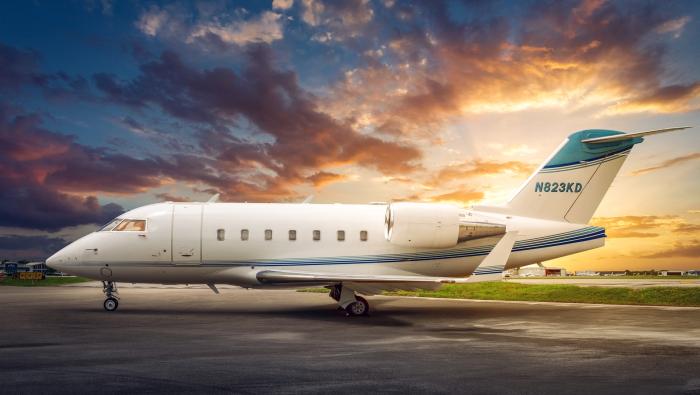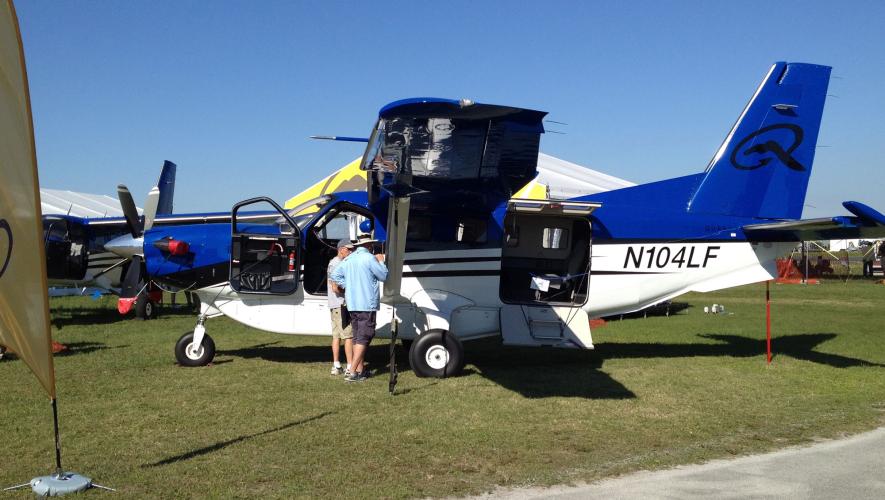The workplace is increasingly complex as it spans five generations, but bridging the gap between them is critical to a company's culture and therefore its safety mission, panelists agreed during Bombardier’s Safety Standdown that took place from November 12 to 14 Wichita. “We recognize that having five generations in the workforce, it adds complexity—it adds tremendous complexity sometimes,” said Jennifer Pickerel, president of Aviation Personnel International, who moderated the panel on Thursday morning.
However, Pickerel suggested that workers “flip that paradigm” as they look at the various generations. “We've never had a broader skill set in the workforce. We've never had this many talented, passionate, skilled professionals in our workforce.”
She pointed to other discussions during Safety Standdown surrounding the critical role communications plays in safety. “The safety of our industry and our community literally hinges on our ability to effectively communicate with each other,” Pickerel said.
But for communication to be effective, it has to be quality and respectful, she said, and posited: “What might be possible if we turn to each other as resources, if we assume good intent, if we elevate our influence by leading by example, and—in the words of Ted Lasso—if we are curious and not judgmental?”
Pickerel opened the panel by discussing the different generations and the attributes they are often believed to bring:
- Traditionalist: those born in 1945 or before who prefer face-to-face encounters, have a strong work ethic, are loyal to a company, respect authority, and value teamwork and structure
- Boomer: those born between 1946 and 1964 who are optimistic, competitive, vie for career advancement and recognition for achievement, are workaholics, and value teamwork
- Generation X: born between 1965 and 1980 and are independent, self-reliant, skeptical, prioritize flexibility and work-life balance, and are known as the latchkey generation
- Millennial: born between 1981 and 2000, are tech savvy, collaborative, prioritize opportunities, and value purpose, career development, and meaning in their work
- Generation Z: born between 2001 and 2020, “digital natives” and highly adaptive to technology, entrepreneurial, socially conscious, and prioritize diversity and inclusion in the workplace
A survey of the Day 3 Safety Standdown audience revealed a cross-section of four of those generations—no one appeared to claim to be a traditionalist—with Generation X and Millennial attendees representing a majority of attendees.
Pickerel brought together a panel with members from various generations to provide insight into views from their generational standpoint. Despite their differing backgrounds, common themes of communication, knowledge transfer, and respect emerged.
Brandon NeSmith, a captain with Coca-Cola Bottling Consolidated, pointed to the perceptions between the generations: Millennials may be viewed as more concerned about themselves and Boomers may be seen as very mission-focused.
Calling himself an “old millennial,” NeSmith noted how important appreciation is between the generations. Not only can it be a key retention tool, but it also fosters collaboration between the generations. “It helps bridge the gap, especially from a younger person, showing appreciation to an older person.”
This includes admitting when you don’t know everything. “The one thing I can do is show appreciation to being surrounded by other people who have expertise and defer to them…It tremendously bridges the gap,” he said. “When someone from my generation doesn't show that type of appreciation, it's not very well received.”
Also, he added, communications go a long way simply through taking an interest in somebody and respecting their time, showing you are not just concerned about yourself—“doing some of that additional stuff, going that extra mile, that blends across all of the generations.”
Work-life balance remains important, but there has to be an earnest desire to contribute, NeSmith said. He noted that this becomes especially notable as benefits are changing in a competitive workplace.
“One of the bones of contention, when I was first hired with this particular company, is that I was gifted—right off the bat from being hired—three weeks vacation,” he said, noting that the older generations “thought that was just preposterous. They had worked for years and years and years to get that amount of vacation. And I didn't ask for that at the time.”
Pickerel agreed, noting that 25 years ago, three weeks of vacation may not even have been a thought. “But as things evolve and it becomes more competitive, we know we're in a pilot shortage, a maintenance shortage, those things have to be increased not to the fault of the people who are receiving them.”
Martin “Marty” Grier, director of maintenance for The Home Depot aviation department who is chair of Safety Standdown’s Advisory Committee and described himself as a Boomer, also agreed with NeSmith. “It all starts with the leadership, the communication you have with your team, and the transparency you're willing to share with them,” Grier said. “They have to be on board, then they have to understand the market you're working with.”
He noted the market has been up and down and “all over the place” in the years he’s been in the industry. “Right now, we're all aware of the fact that the industry is starving for new talent and so supply-demand rules…Over the last two years, it’s just been an off-the-charts dynamic,” he said. “If I include my team in understanding that I may have to provide a little more incentive to this person to come on board our company, they're much more likely to understand and support that.”
He also stressed the importance of culture in all of this. “If you have a good culture, and I've been very happy to say we've had a great culture, people don't leave,” Grier said. Even if turnover is low, “you still have to stay in tune with the market.”
As far as bringing in younger people, Grier noted the importance of knowledge transfer. “Probably one of the stereotypes of Boomers is that we want to keep [or] retain our knowledge and not share it necessarily, because I think sometimes people are threatened by younger, more energetic people,” he said, but added, “We all have something to offer. And so I think it's critical that you cultivate that attitude, that it's a top-down, bottom-up everybody working together to build the team and to share knowledge.”
He added that as a Boomer, “I want the energy, the questions, and the ideas from the younger generations to incorporate into our operation…Everybody can bring ideas.”
The older generations need to transfer knowledge as they exit the industry, he said, noting that the industry is seeing a wealth of knowledge leave. “I see it a lot of the MROs where we go. Now you have this unbalanced situation where you have so many lesser experienced [workers] and it's producing conditions and quality escapes. So how do we manage all that?”
Mentorship is one of the key paths for that knowledge transfer, said Emma Rasmussen, a Robertson Fellow & Safety Science graduate student at Embry-Riddle Aeronautical University. “I think one of the most valuable things to my aviation career and my personal life is having really fantastic mentors, people who are 50-plus years older than me,” Rasmussen said. “And I think it's really important for the younger generations to find those mentors.”
To have that exchange of information is one of the best ways for younger workers to show respect toward the generations that come before them, Rasmussen added, noting that in her experience, older generations are anxious to show their airplanes and take people flying once they see an interest in aviation.
“The biggest way that we can close the gap between the generations is to pay respect to the older generations, but also uplift the new generations that are entering the workforce.”
She noted accusations of Generation Z being lazy or entitled and having it easy, but added, “Every generation has its own unique challenges that we all just don’t understand unless we’ve been through them.”
She said one thing she appreciates about her generation is the open-mindedness. “I feel like I can bring my most authentic self to the table, and if we're going to make our industry stronger and better for the future and leave it better than we found it, I think we have to bring our most authentic selves to the table.”
Rasmussen also pointed out that her generation is extremely safety-conscious, a point that Pickerel agreed upon. Generation Z workers grew up with seat belts and bike helmets, unlike the older generations.
Meanwhile, Cullen Gahagan, a 26-year-old who joined the corporate world as a pilot and director of operations for CSM Companies after a little more than a year with an airline, discussed how technology plays into it, especially since younger generations are more adaptable to a digital cockpit whereas older generations may have more stick-and-rudder skills.
“Really, it comes down to training,” Gahagan said, noting that it doesn’t matter whether a person grew up with typewriters or computers. “Obviously, you have the older generations where those people had been flying with the steam gauges for years and years and now have had to transition into a glass cockpit and use head-up displays and all the bells and whistles,” he said. “That's been a transition.”
Now, students learn in a glass cockpit. “When you get a type rating now on autopilot, you don't learn the stick-and-rudder skills,” he added. “I think that trying to find a balance between the two for both generations, whether you're learning initially in the new stuff or learning as a transition in the new stuff, is important.”
Pilots need those initial basic skills but also must be able to manage the technological advancements. “It's important to approach training from a fundamental standpoint first—learn the airplane, how to fly it, how it feels, how it works, what its limitations are—but then welcome the technology.”
Gahagan also reiterated the views of the other panelists. He noted that, as a younger person, “Sometimes we’re intimidated to stand up because you guys have a ton of experience. But I want to learn from that experience, and that gap is just bridged by communication.”







